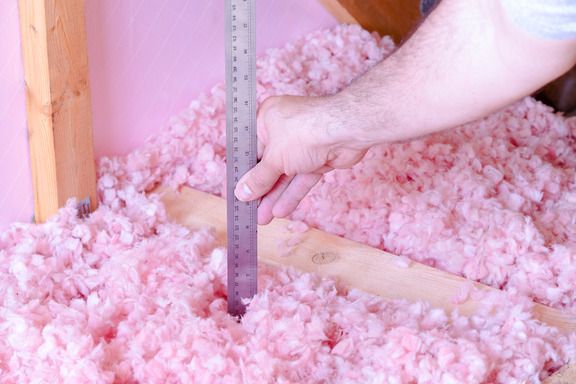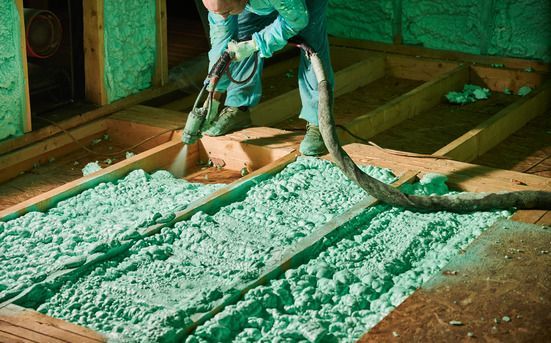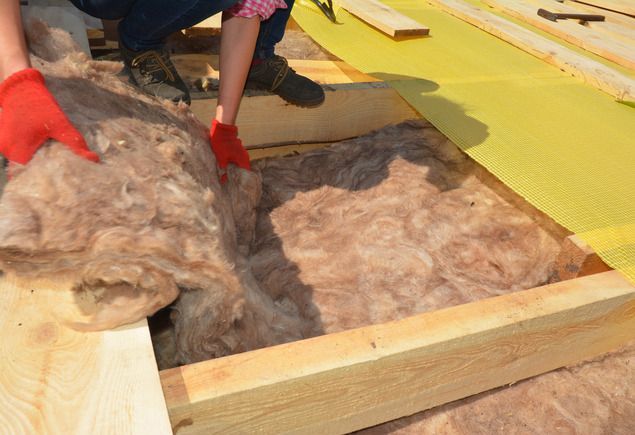Which R-Value is Best for Attic Insulation
Choosing the right R-value for your attic insulation.

Choosing the right R-value for your attic insulation is critical to achieving optimal energy efficiency in your Pasadena home. A recommended R-value for attic insulation in California ranges from R-30 to R-60, which helps maintain comfortable indoor temperatures and reduces energy costs year-round. Understanding what R-value means and how it impacts your insulation selection is key to making an informed decision.
At Attic Squad Insulation Services, we provide expert guidance for homeowners looking to enhance their insulation. By assessing your specific needs and local climate conditions, you can determine the best R-value that fits your attic space. As you read on, you'll discover practical tips and tools to help you choose the right insulation type and understand how to calculate the R-value that suits your home.
Key Takeaways
- The ideal R-value for attic insulation in Pasadena ranges from R-30 to R-60.
- Understanding your insulation needs is essential for energy efficiency.
- Utilize R-value charts and calculators to make informed insulation choices.
Understanding R Value in Thermal Insulation
R-value is a crucial factor in determining the effectiveness of insulation materials in your attic. This section will clarify what R-value means, its significance, and how it is measured to aid your decision in choosing the right insulation for your home.
What Is R Value and Why It's Important
R-value represents the thermal resistance of insulation materials. The higher the R-value, the better the insulation's ability to resist heat transfer, which is vital for maintaining comfortable indoor temperatures.
Different materials have varying R-values. For instance, fiberglass typically ranges from R-2.2 to R-3.8 per inch. Choosing insulation with the appropriate R-value for your climate ensures energy efficiency, reducing heating and cooling costs.
In Pasadena, CA, an R-value of 38 to 49 is commonly recommended for attic insulation. This range helps keep your home energy-efficient and comfortable year-round.
The Science Behind R Value Measurement
R-value is determined by two primary factors: the insulation material used and its thickness. Manufacturers test insulation products to establish their R-value, which is typically provided per inch.
To measure R-value, consider these aspects:
- Material Composition: Fiberglass, cellulose, and foam all have different thermal properties.
- Installation Quality: Properly installed insulation performs better, achieving its rated R-value.
When assessing your attic, measure the insulation's depth and consult manufacturer data to ensure it meets the recommended R-value for your location. This attention to detail can significantly impact energy efficiency throughout your home.
Assessing Your Insulation Needs
To achieve optimal energy efficiency in your home, you must evaluate the insulation requirements in your attic. Key considerations include various factors influencing R-value, the impact of R-value on your energy expenses, and the building codes that dictate minimum insulation standards.
Factors Impacting R Value Requirements
Several factors determine the R-value your attic insulation should have. Primarily, your location plays a crucial role. In Pasadena, California, the climate is mild, allowing for lower R-value requirements compared to colder regions.
Additionally, consider your home’s age and construction type. Older homes often lack sufficient insulation, while newer builds may comply with updated standards. Assessing your existing insulation will help identify if you require an upgrade.
You can measure your current insulation thickness with simple tools. A minimum of 10 to 14 inches of insulation is typically recommended for attics in temperate regions.
How R Value Affects Heating and Cooling Costs
The R-value directly influences how well your attic resists heat transfer. Higher R-values provide increased insulation, which can substantially reduce heating and cooling costs. During hot Pasadena summers, effective insulation keeps your home cooler, reducing reliance on air conditioning.
Conversely, during the winter, adequate R-value prevents heat from escaping. According to the U.S. Department of Energy, improving insulation can save homeowners up to 20% on heating and cooling expenses.
Selecting insulation that achieves the appropriate R-value can lead to long-term savings and enhanced comfort.
R Value Requirements for Building Code Compliance
Building codes set minimum insulation R-value requirements to ensure energy efficiency in residential structures. In California, Title 24 establishes these guidelines based on climate zones. Pasadena falls within Climate Zone 3, which typically mandates an R-value of 38 for attic insulation.
Ensuring your insulation meets these codes is crucial for compliance and energy conservation. You should always consult local building regulations before undertaking insulation projects.
Adopting the right R-value not only aligns with legal standards but also maximizes your home’s comfort and energy efficiency.
R Value Chart and Calculator Tools
Understanding the R-value is essential for effective attic insulation. R-value charts and calculators are valuable tools that help determine the appropriate insulation levels for your specific needs. They provide a clear way to assess the thermal resistance required based on your climate and home structure.
Using an R Value Chart
An R-value chart is a quick reference tool that outlines recommended insulation levels for different climate zones. For instance, in Pasadena, California, you may refer to a chart that specifies R-values ranging from R30 to R60 for attics.
Climate Zone Recommended R-Value Zone 3 R30 to R60 Zone 4 R38 to R60
Using this chart, you can quickly identify the insulation requirements to enhance energy efficiency and comfort in your home. Remember, a higher R-value indicates better insulation performance.
Calculating the Right R Value with a Calculator
R-value calculators take your specific home information to provide a tailored recommendation. To use a calculator, you typically input your home’s dimensions, the type of insulation, and local climate information.
These calculators will then compute the necessary R-value to achieve optimal thermal resistance. You can also use online tools from insulation companies or energy efficiency organizations. Be sure to check multiple calculators to compare results and ensure accuracy. This step is crucial in making informed decisions about your attic insulation needs.
Selecting the Right Insulation for Your Attic
Choosing the right insulation for your attic involves understanding the various materials available, the climate in which you live, and the insulation's R-value. Each aspect plays a vital role in ensuring energy efficiency and comfort in your home.
Types of Insulation Materials
There are several types of insulation materials commonly used for attics, including:
- Fiberglass Batts: Prefabricated panels of fiberglass, ideal for DIY installation. They are relatively inexpensive but require careful installation to minimize air gaps.
- Blown-in Fiberglass: This type is installed using a blowing machine and can settle into irregular spaces better than batts. It provides excellent coverage but may require professional installation.
- Spray Foam: Offers a high R-value and acts as both insulation and an air barrier. It expands on application, filling gaps but is more expensive than other options.
- Cellulose: Made from recycled paper, cellulose is an eco-friendly choice. It provides good insulation and is often treated for fire resistance.
Best Insulation for Hot Climates
In hot climates, it's essential to choose insulation that minimizes heat absorption. Look for materials with a high R-value to enhance thermal resistance.
For example, spray foam insulation provides superior performance by sealing gaps and preventing air leakage. Reflective or radiant barrier insulation is also effective, particularly when installed in attics. It reflects radiant heat away from living spaces, keeping your home cooler during scorching summers.
Choosing Insulation Based on R Value
The R-value measures insulation's resistance to heat flow. The higher the R-value, the better the insulation's effectiveness.
For attics, you should aim for an R-value between R-30 and R-60, depending on your local climate. In hotter regions like Pasadena, consider a lower R-value, while cooler areas may need higher.
Before making your decision, assess your current insulation and consult local building codes, which can provide guidance on the required R-values for your area.
Conclusion
Choosing the right R-value for your attic insulation is essential to enhance your home’s energy efficiency. The R-value measures insulation's resistance to heat flow. A higher R-value means better insulation and increased comfort in your living space.
For Pasadena, CA, the recommended R-value for attic insulation typically ranges between R-38 and R-60. This range provides a good balance of energy savings and comfort throughout the year.
Consider the long-term benefits of proper attic insulation:
- Reduced Energy Bills: Effective insulation helps maintain consistent indoor temperatures, leading to lower heating and cooling costs.
- Enhanced Comfort: Proper insulation keeps your home warm in winter and cool in summer.
- Increased Property Value: Energy-efficient homes are often more attractive to buyers.
Attic Squad Insulation Services can help you determine the best R-value for your specific needs. With professional installation, you ensure that the insulation performs well, giving you peace of mind.
Investing in the right insulation not only improves your home's energy efficiency but also contributes to a comfortable and inviting living environment. Make an informed choice to protect your home and enjoy the benefits for years to come.
You might also like
Book a Service Today
We will get back to you as soon as possible
Please try again later
Quick & Reliable
Don’t wait to improve your home’s energy efficiency and comfort. Contact Attic Squad today to schedule your free consultation and take the first step towards a more comfortable, energy-efficient home.
All Rights Reserved | Attic Squad



